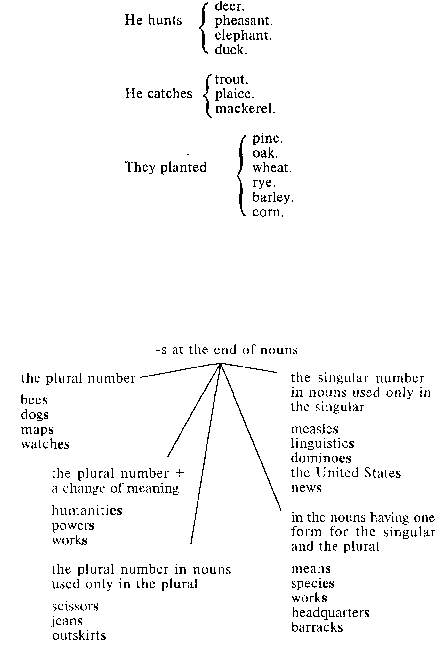
EFL teachers should teach their students to differentiate between nouns with -s at the end. -S marks the
plural number in countable nouns and nouns used in the plural and may be part of the stem of the noun
(which in some cases developed from the former plural number) that may be a marker of the plural
number or not.
On other hand, the absence of -s at the end of the word is not necessarily a marker of the singular
number.
One other problem in connection with number of nouns should be given considerable attention to in
the teaching process. This is concord or agreement between forms of the subject-noun and the predicate-
verb. The general rule is well-known: the subject-noun in the singular requires the predicate-verb in the
singular and the subject-noun in the plural requires the predicate-verb in the plural if the verb form admits
of the expression of the singular and the plural. In other words, if the subject is a singular proper name, a
singular common noun, a mass noun, or a third person singular pronoun the third person singular
inflection is used with the predicate-verb in the present tense or the form "was" is used for the past tense
if the verb "to be" is required by the sense. No inflection is used in the present tense and the form "were"
in the past (if it is required by the sense) with subjects proper or common plural nouns, or plural
pronouns. However, there are many special and difficult cases concerning this rule.
1. Collective nouns can take either a singular or plural inflection depending upon the meaning:
government has
have
crowd it, they
committee itself its which was
themselves their who were

